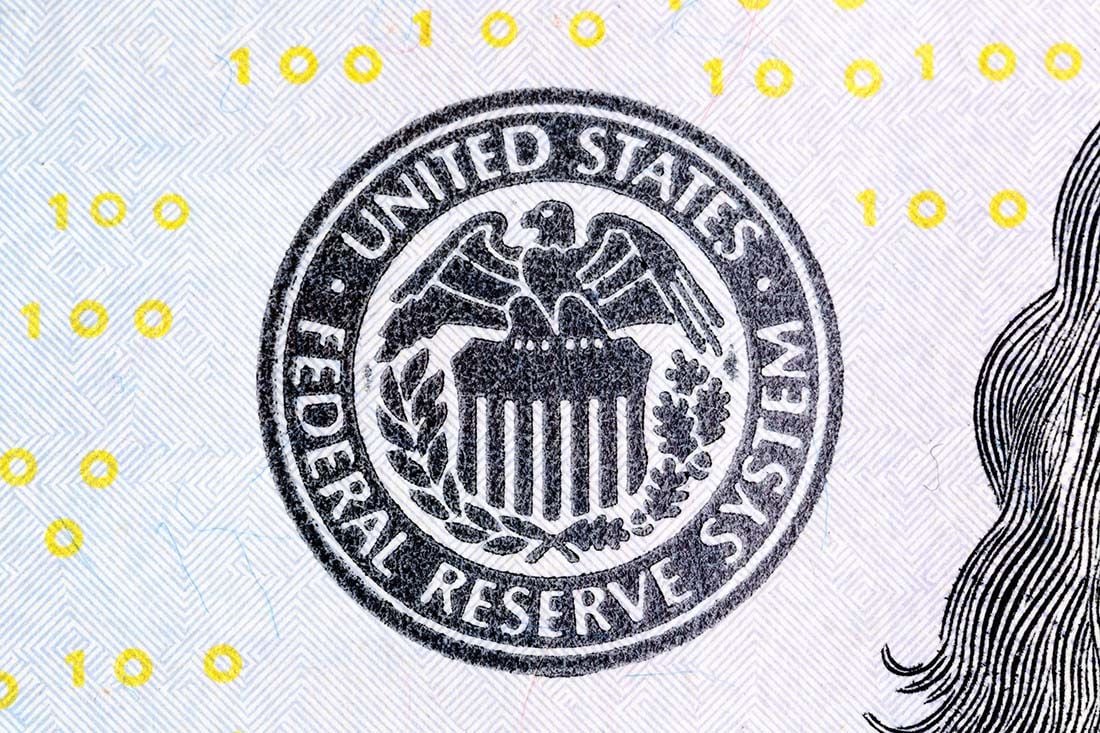U.S. Dollar Extends Recovery after Federal Reserve Meeting but Doubts Over Outlook Grow
- Written by: James Skinner
-

© Dmytro Synelnychenko, Adobe Stock
- USD rises after Fed suggests it will push on with rate hikes.
- Fed to hike in December but economists skeptical about 2019.
- Growth slowdown, stock market volatility may soon scupper Fed.
The Dollar extended its rebound from an earlier election-induced slump Thursday after the Federal Reserve (Fed) signalled that it will continue with its plan to raise U.S. interest rates during the months ahead.
The U.S. central bank left the Federal Funds rate range unchanged at 2% to 2.25% at the end of their November policy meeting, leaving analysts looking to December for the next rate hike.
Federal Reserve officials made only minor tweaks to their accompanying statement, adapting it to take account of a small decline in the rate of business investment growth during the third-quarter.
"This was the Fed’s last meeting without a press conference, so the decision to leave the target for the fed funds rate unchanged at 2.00-2.25% came as no surprise. Attention was focused on the minor change to the post-meeting statement which, if anything, was slightly dovish," says Michael Pearce, an economist at Capital Economics.
Markets care about the decision because of the changes in interest rates impact currencies because of the push and pull influence they have on international capital flows and their allure for short-term speculators.
The Federal Reserve suggested in September that it will raise its interest rate so that the top end of the Federal Funds range reaches 3.25% some time in 2019, and that rates could rise further in 2020, to 3.5%.
It also dropped the well-worn line that monetary policy remains "accomodative" from the accompanying statement, suggesting the Fed is aware that higher interest rates could soon weigh on the economy.
"The statement suggests that the Fed is still on track to continue raising interest rates gradually, with the next hike coming at its December meeting. We anticipate that will be followed by two rate hikes in the first half of 2019. By the middle of next year, however, we expect economic growth to slow below its potential pace, which would force the Fed to the sidelines," says Pearce.
The U.S. Dollar index was quoted 0.08% higher at 96.79 Thursday, leaving it up by 4.9% for the 2018 year.
The Pound-to-Dollar rate was 0.38% lower at 1.3015 and the Euro-to-Dollar rate was down 0.27% at 1.1338.
Curiously, the Federal Reserve made no mention this Thursday of the violent moves seen in U.S. and global stock markets during October.
"We’re slightly surprised the Fed didn’t mention the drop in stocks, though the rally over the past week means that the net impact on financial conditions since the market’s peak is very small. Assuming that remains the case, a rate hike next month is a done deal," says Ian Shepherdson, chief U.S. economist at Pantheon Macroeconomics. "But what we really want to see is how the Fed’s thinking evolves over the first few months of next year."
Despite the central bank's optimism, markets are skeptical about how far the Fed will really be able to lift its interest rate.
Higher rates will eventually lead to slower growth and that's assuming events in financial markets don't force the Fed to the sidelines before then.
Stocks, long seen as a gauge of investor confidence, are providing signals to currency markets about investors' outlooks for the U.S. and global economy.
U.S. stocks crumbled in October after an auction of 10-year bonds forced the interest rate the government pays on its debt to its highest level since 2011.
Landmark levels for yields are significant for stocks, which had risen more than 14% in the 12 months to October, because of the impact they have on the financial models analysts use to determine "fair value" for share prices.
In short, higher bond yields reduce the perceived value of company shares, commanding a fall in the stock market in response to meaningful changes in borrowing costs.
This is a problem for the Federal Reserve because falling stock markets can raise funding costs for companies and make it harder for them to raise capital. That can slow economic growth.
"US political deadlock will lead to lower yields and slower growth from mid-2019 onwards but in for now, 10s are likely to push higher and the FOMC will continue to hike. I can't see this risk rally going far," says Kit Juckes, chief FX strategist at Societe Generale. "If the equity market doesn't stand in its way, the FOMC will just carry on tightening."
In addition, declining stock markets can create negative wealth effects, which deter spending and investment among households that may feel poorer after suffering steep losses in the markets. That can also lead to slower growth.
Slower growth itself impacts the Federal Reserve by reducing inflation and impairing the outlook for consumer prices up ahead.
In short, if the economic and inflation outlook deteriorates sufficiently in the months ahead, the Fed may be compelled to stop raising rates.
Any comments by the Fed about financial market developments over coming months will be viewed by the investors and traders with the above in mind.
Advertisement
Bank-beating exchange rates. Get up to 5% more foreign exchange by using a specialist provider to get closer to the real market rate and avoid the gaping spreads charged by your bank when providing currency. Learn more here










